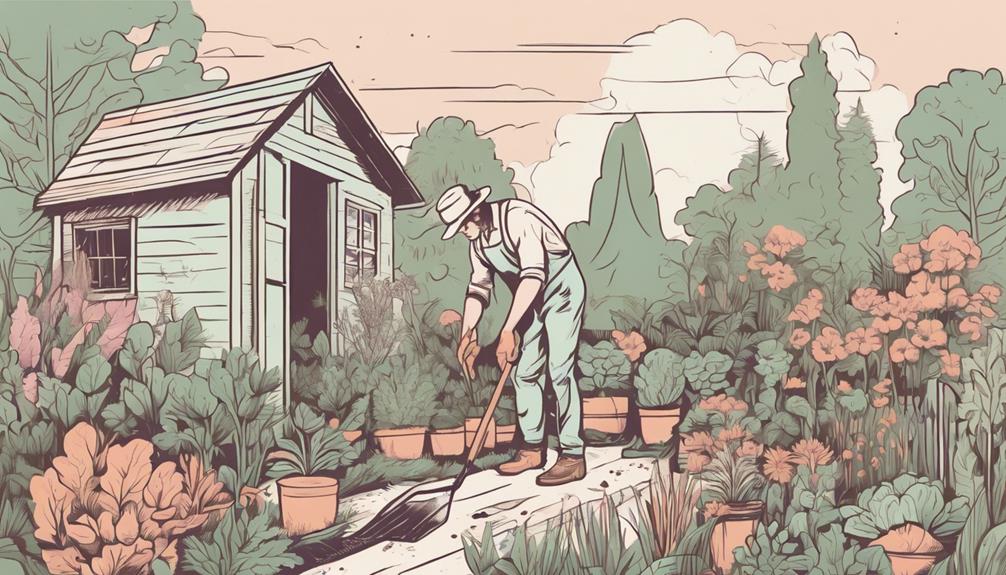See All: Backyard Farming
Free Backyard Farming Webinar…
You can grow food! This free webinar is for people who want the fastest and easiest ways to produce healthy and delicious vegetables, eggs, and meat. Because you know that growing your own food is like printing your own money…
Click Here To Watch The Free Webinar Now!
“I’ve recently started a backyard farm here in Melbourne, Australia, and I’m trying to make sure I have good soil health before planting everything. What’s the best way to test my soil to ensure it’s healthy and fertile? I’m seeing some patchy areas where plants aren’t growing well. What steps should I take to check and improve my soil’s condition?” Thanks, Jack, Melbourne, Australia.
How Do I Test My Soil’s Health?
Hey Jack! Congrats on embarking on your backyard farming journey. Testing your soil’s health is a fantastic first step to ensure you have a thriving and productive garden. Let’s explore how to go about it and why it’s so important.
Why Soil Health Matters
Understanding soil health is crucial because the soil is the foundation of plant life. Healthy soil supports robust plant growth, enhances nutrient uptake, and improves resistance to pests and diseases. Soil quality affects water retention, root development, and ultimately, the yield and quality of your crops.
Visual Inspection and Simple Tests
Visual Clues
Start by observing your soil. Healthy soil is typically dark and crumbly with a rich earthy smell. If it’s pale, compacted, or has an off-putting odor, there might be underlying issues.
Soil Texture Test
Testing soil texture can give you insights into its composition, such as the proportion of sand, silt, and clay.
- Jar Test: Fill a jar two-thirds full with water and add a handful of soil. Shake well and let it settle for 24 hours. Layers will form: sand at the bottom, silt in the middle, and clay at the top. Measure the layers to determine your soil type.
Soil Compaction Test
Soil compaction can hinder root growth and water infiltration.
- Simple Penetration Test: Use a stick or a long screwdriver to probe the soil. If it’s hard to push in, your soil might be too compact.
Lab Tests for Detailed Analysis
Soil Testing Kits
DIY soil testing kits available at garden centers can provide basic information about soil pH, nutrient levels, and organic matter content.
Professional Lab Tests
For a thorough analysis, consider sending soil samples to a professional lab. This will give you detailed reports on:
- pH Levels: Indicates soil acidity or alkalinity, crucial for nutrient availability.
- Macronutrients: Levels of nitrogen, phosphorus, and potassium, which are vital for plant health.
- Micronutrients: Presence of elements like iron, manganese, zinc, and others in smaller quantities.
- Cation Exchange Capacity (CEC): Measures the soil’s ability to hold onto essential nutrients.
To collect samples, dig small holes across your yard, mix the soil, and use this composite sample for testing.
Improving Soil Health
pH Adjustment
Depending on the pH levels found in your soil, you may need to adjust it. Most plants prefer a pH between 6.0 and 7.0.
- To Raise pH: Use lime or wood ash.
- To Lower pH: Incorporate sulfur, peat moss, or organic matter.
Adding Organic Matter
Organic matter improves soil structure, fertility, and microbial activity. Consider adding:
- Compost: Homemade or store-bought compost enriches the soil.
- Manure: Well-rotted manure adds nutrients and organic matter.
- Mulch: Organic mulches help retain moisture and improve soil quality as they decompose.
Managing Nutrients
If your soil lacks specific nutrients, targeted fertilization can help.
- Nitrogen: Boost with composted manure, coffee grounds, or fish emulsion.
- Phosphorus: Bone meal, rock phosphate, and aged manure are good sources.
- Potassium: Add wood ash, kelp meal, or greensand.
Cover Cropping
Planting cover crops, such as legumes, grasses, or clover, can help fix nitrogen, prevent erosion, and improve soil structure. These are often planted during the off-season.
Crop Rotation
Rotating crops prevents nutrient depletion and reduces the build-up of pests and diseases. Different plants have varying nutrient needs and pest resistances.
Biological Indicators
Earthworm Count
Earthworms are excellent indicators of soil health. More earthworms usually mean better soil structure and organic matter content.
- Dig a small section of soil (around 1 cubic foot) and count the number of earthworms. More than 10 worms per cubic foot is a good sign.
Microbial Activity
Healthy soil teems with microorganisms. While this requires more advanced equipment to measure accurately, professional testing can provide insights.
Sustainable Practices
Jack, adopting sustainable practices ensures long-term soil health.
Reducing Tillage
Lesser tillage helps maintain soil structure and microbial life. Consider no-till gardening or using tools that minimize disruption.
Water Management
Avoid both waterlogging and drought conditions. Drip irrigation systems can provide consistent moisture without over-saturation.
Practical Tips
- Start Small: Gradually implement changes to observe their effects better.
- Regular Monitoring: Soil health isn’t a one-time check. Regular testing and observation will keep you ahead of potential issues.
- Record Keeping: Maintain a log of soil tests, improvements made, and crop outcomes. This helps in understanding long-term changes and effectiveness.
Final Thoughts…
Jack, testing and improving your soil’s health is an ongoing process that requires observation and adaptation. Making informed changes based on your soil’s specific needs will set a strong foundation for your backyard farm, leading to healthier plants and better yields. Happy gardening, and thanks for trusting me with your question!
Return To: Backyard Farming
Free Backyard Farming Webinar…
Marjory Wildcraft: For 20+ years, Marjory has been a leader in survival & preparedness and wants to show you how to grow food in your backyard farm. This free webinar is for people who want the fastest and easiest ways to produce healthy and delicious vegetables, eggs, and meat. Because you know that growing your own food is like printing your own money…

